We are passionate snorkelers and a scuba divers, so coming to the Ningaloo Reef was a must do on our list when travelling Australia.
Our goal was to snorkel as much as possible, in as many areas as possible and to see the diverse range of marine life known to live in the area. Wow, did we get what we were asked for!!
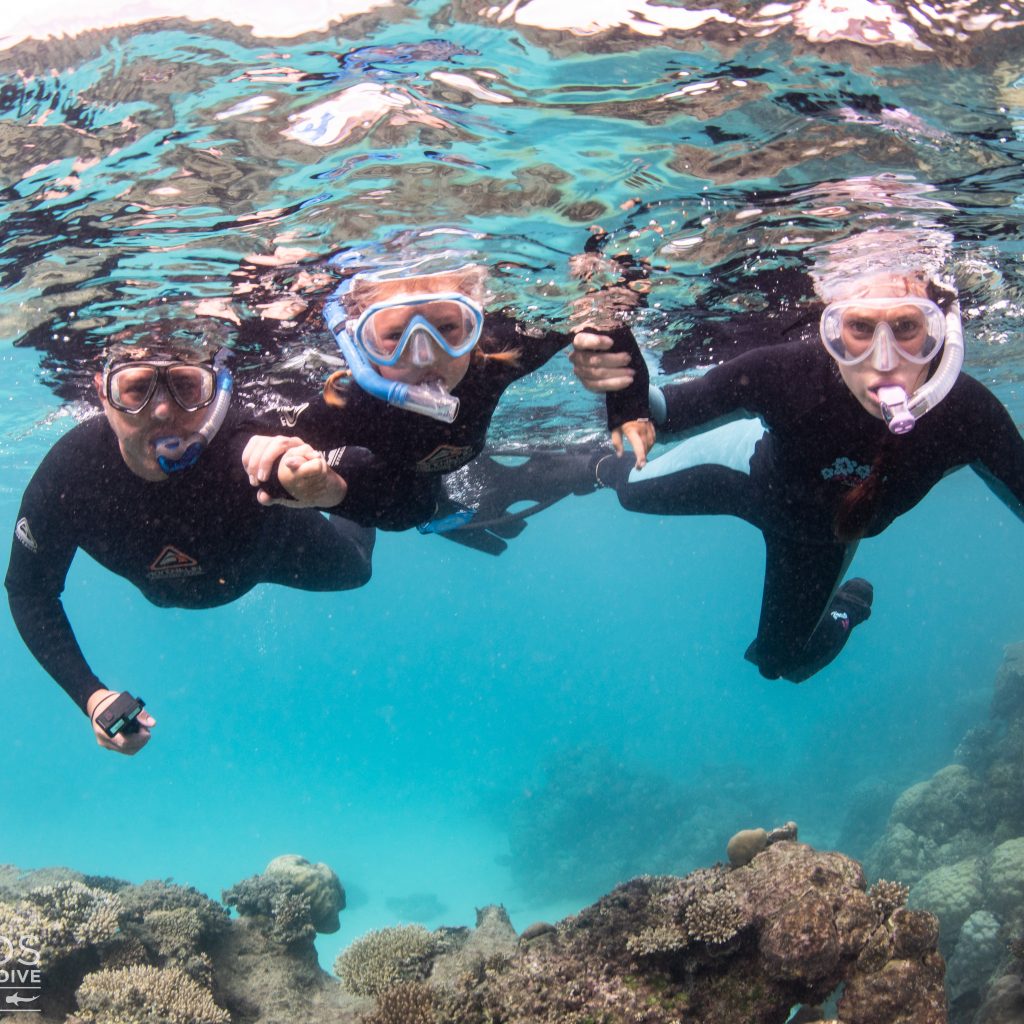
We have created, this ‘Best 10 Snorkelling Locations List’ with all details of how you can get the most out of your snorkelling adventures at the marine protected Ningaloo Reef.
Make sure you save this guide offline before you head there as the internet is really patchy, unless you have our ‘Overland Exposure Internet Kit’ of course, as we were able to get internet at all of the Ningaloo campsites with our kit
We have written this guide after spending 8 weeks in the area, camping at most of these camps and day tripping to those without camps.
In each of these guides you can expect to find details about access to the area, best spots we’ve found to snorkel in each area, what marine life you can expect to see and the type of snorkel.

1. South Lefroy
This is our favourite spot to snorkel and camp in the Ningaloo. It can be a challenging snorkel due to the drift currents but it is highly rewarding.
After driving out to South Lefroy, turn left towards and follow the signs to campsite no. 1. You can drive all the way onto the beach here for ease of carrying all of your equipment.
The current runs strongly South to North here, so ensure you are a reasonably confident snorkeller. We recommend you only snorkel this area while wearing a set of fins, enabling you to control yourself better in the water. We went snorkeling at various tides, however did not go at high tide, but tide level didn’t seem to matter too much for us.
Head straight out to the reef from site #1 over a bed of sand, about 50m to find the beginning of the best coral and sea life. The further you go, the shallower it gets with plate coral, however the best snorkelling lies closer to shore with the large bommies in the slightly deeper water. No two snorkels here will be the same, depending on how far you get and the time of day you will see totally different marine life. Once you start snorkelling and having a look around, keep checking your position in relation to the shore, as the best snorkelling finishes at about site 12. However, you can continue following the drift and you will find scattered coral, plate coral, seagrass and marine life. Do make sure you get out before the shady point otherwise you’ll be swimming quite hard against the current to get back into shore.
Some of the marine life you can expect here are tropical reef fish, Green sea turtles, black tip and white top reef sharks, wobbygongs, seastars, octopus, blue spotted stingrays, small eels, clown fish, damsel fish, scorpion fish in cracks and crevases, and one very large Moray eel if you look carefully inside a bommie close to shore near site 15.
Spear fishing is allowed at South Lefroy so a there are not as many large fish present in the area. Dolphins were spotted swimming in the bay regularly too so you never know your luck, you may get a swim with them too.
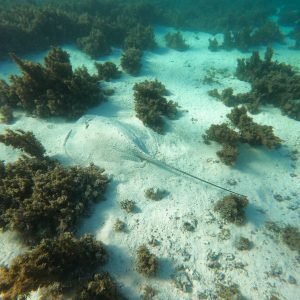

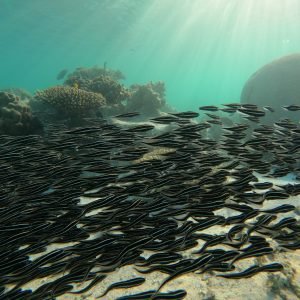


2. The Drift, Turquoise Bay
There is a separate carpark for this snorkelling area, on the left after you take the turn to Turquoise Bay. Head for the beach and turn left. The strong current here is South to North so walk down the beach to the left until it starts to curve away from the reef. At this point head on in and start swimming out.
The marine life starts almost immediately with small scattered coral gardens but as you continue out these will join up and form a stunning reef area. The current will drift you northwards, and make sure you keep an eye out for green sea turtles cruising around and hawksbill turtles tucked under ledges having a snooze.
Ensure you head back to shore before the Sandy point as the current close to shore is quite strong. (There are signs at the beach entry to show you where this starts).
The marine life you can expect to see here includes black tip and white tip reef sharks, octopus, turtles, small eels, large schools of colourful reef fish, blue spotted rays and heaps more.
Spear fishing is not allowed here, so you will see some large schools of larger fish, good size parrot fish, trigger fish and gropers.
After you snorkel you can have a relaxing time on the sands of Turquoise Bay which is a spectacular calm, clear blue water bay, perfect for kids.

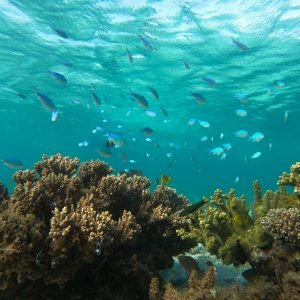

3. The Lagoon, 3 Mile Camp, Gnaraloo Station
Situated at the far end of a corrugated access road, about 2 hours from Carnarvon, Gnaraloo is a remote beachside camp, however it does have running bore water and toilet/shower facilities.
Gnaraloo has epic surfing waves, but also a fantastic lagoon, and some of the best snorkelling in the Ningaloo, as it sits right at the southern end of the fringing reef, where the reef meets the shore.
Our Highlight snorkel here requires you to be a confident swimmer, it’s called the Keyhole Snorkel, and they can tell you all about it and can show it to you on a map.
You leave from the calm beach area, into the lagoon, and head towards the “keyhole” (The entrance to the lagoon, through the reef) The area around here is shallow, with amazing coral life and plenty of marine species, such as Turtles, Reef Sharks, huge Parrotfish and more. From here you swim through the Keyhole, and emerge on the outer side of the reef. You swim along the edge here, exploring the deeper Bommies, for about 500metres, before heading back into shore at a different, small beach.
This is a really intense snorkel, as the deeper water isn’t normally accessible from any of the other campsites or snorkelling sites on the list.
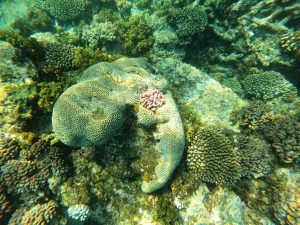



4. Hidden Beach, South Lefroy
A hard one to get too 4WD definitely required! Head past the southern end of the South Lefroy Campsite, and follow the road until you reach the Dunes. Follow the road up the dunes, and once you are on top, head over towards the ocean. You should see some tyre tracks from other adventurers. If you don’t find a way over to hidden beach, you will likely end up down in the Bores area, heading towards the whaling station. Take a hard right and head towards the ocean. Once you get to the dunes close to the ocean, you will see a way to drive down onto the beach, and a small bay.
Snorkelling here is different, it’s a North to South current, so walk up the beach a little and jump in. You will likely see some Rays in the sand here, and the lagoon is fairly deep right from the shoreline. swim out a little, drift with the current and the lagoon will get a bit shallower. Chill out here for a large range of coral garden Bommies, reef sharks, turtles, rays, eels and other such marine life!
The current will gently drag you around the corner of the beach heading south. Stay in the water over the sea grass and head out a little, and you will find Shark Alley. Plenty of decent sized sharks in here, plus turtles and some large rays, one was about 3m from tip to tail!
Once you are finished, head towards shore. The current gets stronger closer to shore so just go with it as you head in.
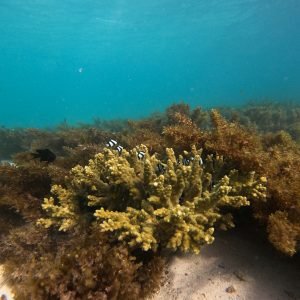

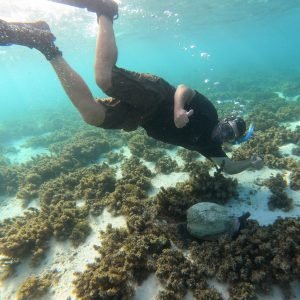

5. Osprey Bay
One of the best 2wd accessible campgrounds in Australia, sitting in the Cape Range National Park. A small beach entry lies here from the Day use area in between the two campgrounds. Head straight on out about 25m, there isn’t much current at all. The best area to explore here will usually have a snorkeller or two already there, It’s a rock shelf that features heaps and heaps and heaps of tropical fish, and about 8 turtles live here. They chill out all day on the bottom of the sand, sometimes wedged under rocks!
If you head out further, you will see a lot of plate coral etc, the best experience here is definitely the turtles relaxing. (I did see a really, really big Crayfish here under some plate coral too!)
This snorkle is great for all ages.
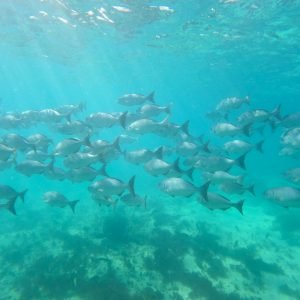
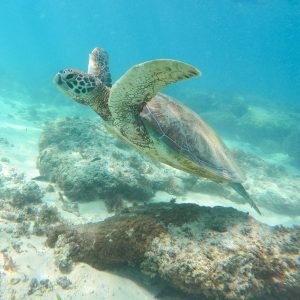
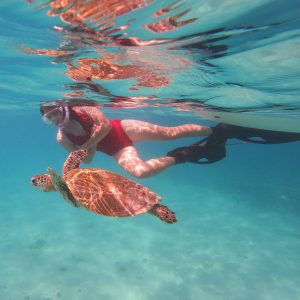
6. Five Fingers, Coral Bay
This one is pretty interesting to get to. From the town of Coral Bay, follow the signs out to the boat ramp. Once you reach the boat ramp, make sure your tyres are let right down, the sand road to Five Fingers is reasonably difficult, and very very bumpy.
Once you reach the beach, find a spot to park up out of the way of the tide. The beach here can get really really soft, so be aware! And there isn’t really a need to drive down from the beach entrance too far.
Once you are in, the snorkelling is really amazing, as the structure of this reef stretches rocky fingers out into the bay.
Expect heaps of tropical fish, Octopii, Giant Clams, Stingrays, Huge Sea Stars and some really impressive coral. The current didn’t seem to bother us at this one, but that doesn’t mean that it doesn’t. We found the most life out further from the shore but did see 2 Huge rays in close, so be careful where you walk.
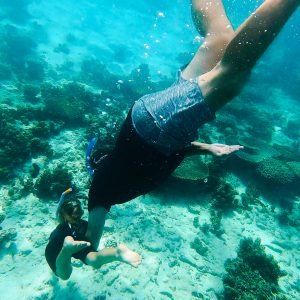
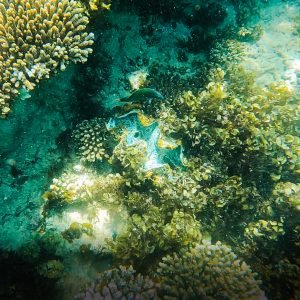
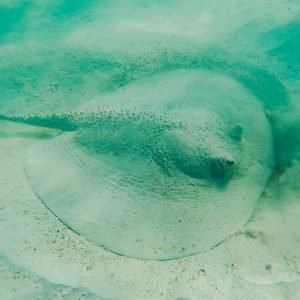
7. Oyster Stacks
High and Medium Tide only! Oyster Stacks lie in the National Park area, and are a short drive north of Osprey Bay. A short walk from the parking area (No room for big rigs, although we snuck in) leads you to a rocky shelf at the edge of the water. Once you are in, the shallow reef is right there, including the impressive Oyster Stacks themselves, which are rocks absolutely coated in the things.
Plate coral goes all the way out to the edge of the lagoon, so take your time here. There isn’t much current either. A thoroughly enjoyable and easy snorkel. Watch out for the stingy jelly fish if you see them before you get in, and if you see them try to wear a wet suit or similar as they hurt! There isn’t much to this one other than just snorkel around where you are comfortable and you will see lots of sea-life and have a great time.
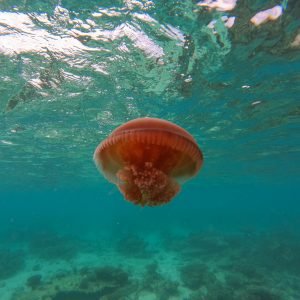

8. Gnaraloo Bay, Gnaraloo Station
Situated at the far end of a corrugated access road, about 2 hours from Carnarvon, Gnaraloo is a remote beachside camp, however it does have running bore water and toilet/shower facilities.
Gnaraloo has epic surfing waves, but also a fantastic lagoon, and some of the best snorkelling in the Ningaloo, as it sits right at the southern end of the fringing reef, where the reef meets the shore.
Our Highlight snorkel here requires you to be a confident swimmer, it’s called the Keyhole Snorkel, and they can tell you all about it and can show it to you on a map.
You leave from the calm beach area, into the lagoon, and head towards the “keyhole” (The entrance to the lagoon, through the reef) The area around here is shallow, with amazing coral life and plenty of marine species, such as Turtles, Reef Sharks, huge Parrotfish and more. From here you swim through the Keyhole, and emerge on the outer side of the reef. You swim along the edge here, exploring the deeper Bommies, for about 500metres, before heading back into shore at a different, small beach.
This is a really intense snorkel, as the deeper water isn’t normally accessible from any of the other campsites or snorkelling sites on the list.

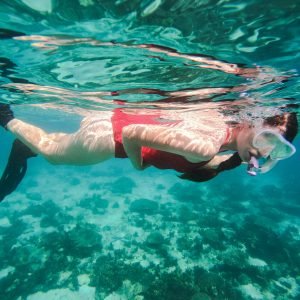
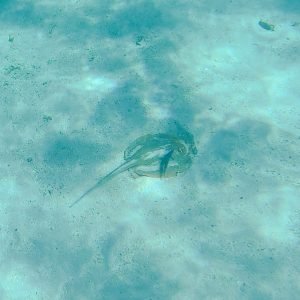
9. Kurrajong
A smaller and much less popular site than Osprey Bay, Kurrajong is a 2WD accessible camp next to the water. Like the rest of the Ningaloo camps, fringing reef protects the lagoon.
The snorkelling here is good but not great, after entering the camp past the camp hosts, turn right and park in the visitors day park. From here there is a path that heads towards the beach, and past one of the campsites.
This is a really shallow snorkle with almost no current, it’s fantastic for kids and adults to share together. A sandy bed leads out to assorted rock formations which are algae covered, however as you head further from shore they get better and better.
My highlights on this snorkel were some really large Parrotfish, and a Lion Fish out in the open! Really rare to see. And the reef sharks of course!



10. Lakeside
Lakeside is a fantastic snorkel site. Drive behind the Milyering Visitor Centre (which is worth a stop) and make your way to the car park. Grab you gear and walk down the beach to the South until you see the snorkel sign. It is here that you will see the reef area from the shore. You will also see the buoys in the water marking out the area. The tide and current outside of this area can be strong, so keep these buoys as your reference point. This one is pretty straight forward as you just work your way around the area and when you’re down, and you’ve reached the Northern buoy of the two, head straight back in to shore to avoid the rips and current.
Extra – Outer Reef
To get to the outside of the main fringing reef, you need to either do a tour, or own a boat. The main attraction out here are the Whale Sharks, and possibly Manta Rays. We used 3 Island Tours, and had a great day, including pick-up/drop-off in Exmouth, bus to the boat, a snorkel over some deeper reef inside the lagoon (Leopard Shark, Wobbegong and Turtles!) then out to the main attraction, the Whale Sharks. They use spotter planes to find them for the snorkelling boats.
It’s all a bit hectic once you are around the Whale Sharks, but basically they split us into two groups, and we leapfrogged one another being picked up and dropped off by the boat, each of us getting a few minutes to swim with the huge, graceful goliaths.
We had all had enough by the time we finished up, over the course of an hour or so, everyone got around 5 swims with 2 different Whale Sharks, and the photographer was able to get some photo’s of all of us.
We headed back into the lagoon, had a decent buffet lunch and then one last drift snorkel, before heading back to the bus. It was an epic experience, and one that I will remember for a very very long time.
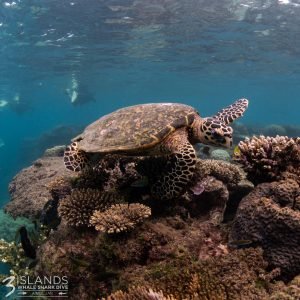
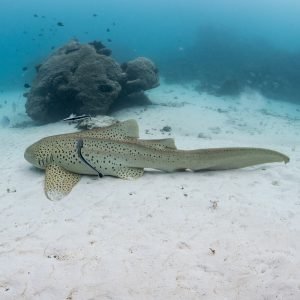
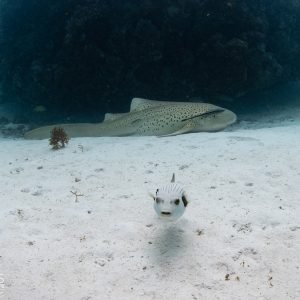
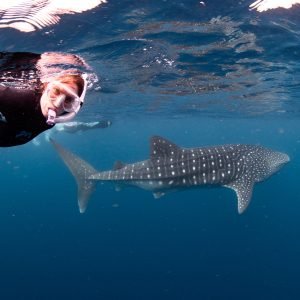
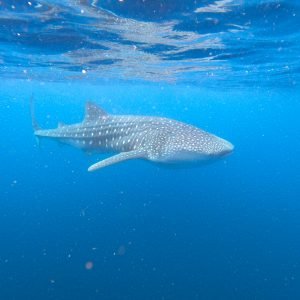
In summary, snorkelling the Ningaloo Reef has something suitable for everyone. We still have a few spots left to snorkel on our way South in Western Australia, such as Winderabandi Point and the Exmouth Navy Pier. If you have any other recommendations, please leave us a comment and we will try to check it out.
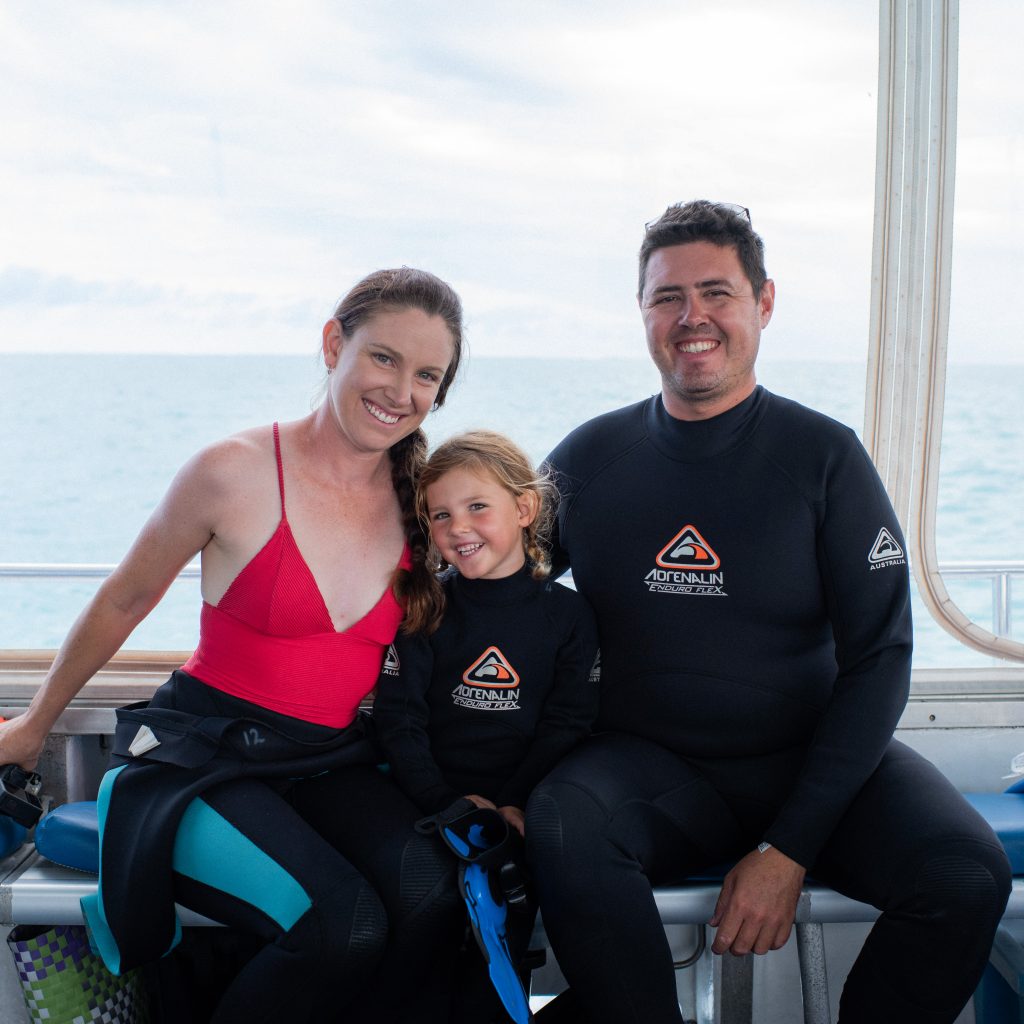
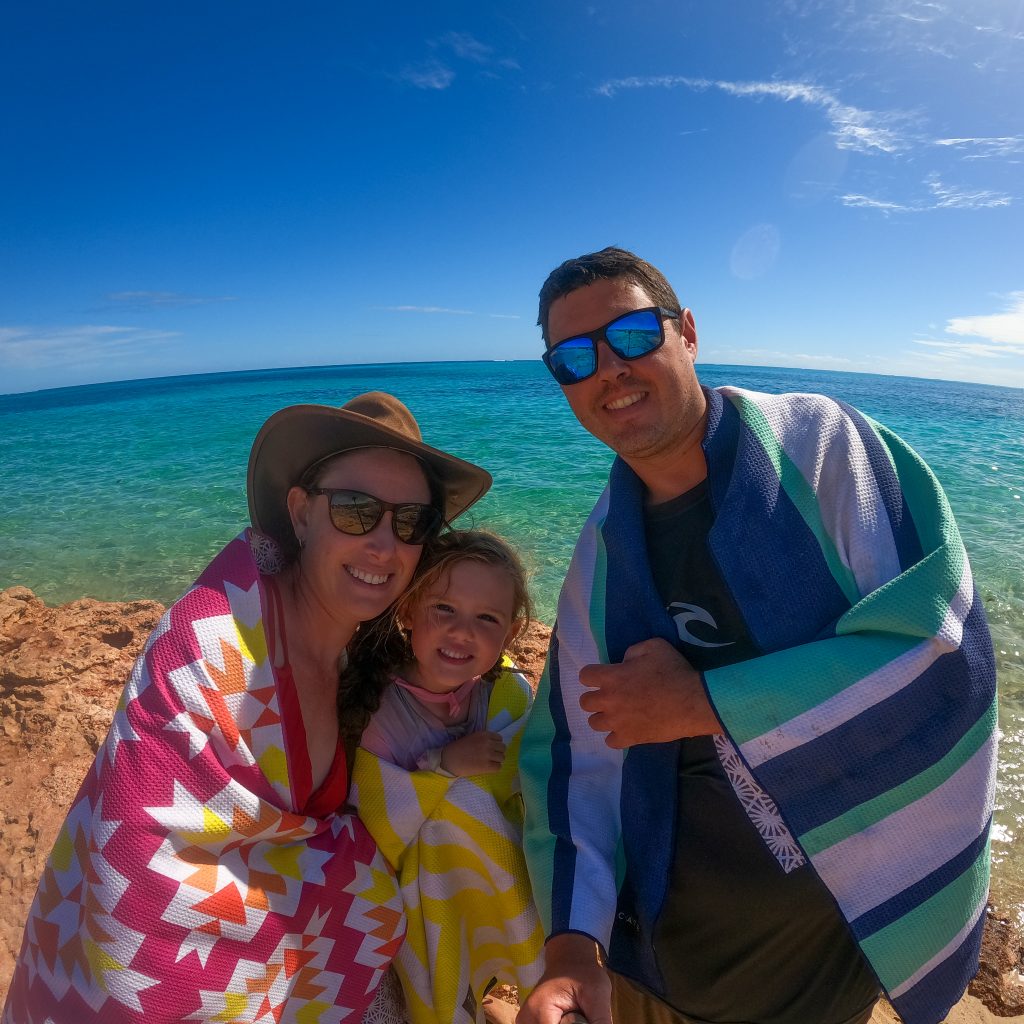
There are many tours you can book if you’d like a guided or more specialised experience, including the obvious Whale Sharks tours. Here are a few we have heard are great!
If you enjoyed this blog or found it useful, please feel free to click on any of the ads on the page, it doesn’t cost you anything, but it does help us see a little money to cover the hosting costs of the website.
Further, if you are looking to support us in other ways, you can buy a product from our Travel Tools Page, purchase a piece of Dan’s photography art or ‘buy us a coffee“.
We also offer one-on-one travel consultations, via video calls. If you wish for further information, clarification or personalised advice for something specific to your travel needs, feel free to book a session to chat with us.
Finally, don’t forget we have heaps of other helpful blogs for travelling Australia on our website, plus so much more!
Disclaimer: I may make a small commission if you buy from our links on our website, it just helps us cover the costs of the website to have this info available for you and costs you nothing more.

Thankyou for this! We are heading there soon and very keen to get snorkelling!
You’re welcome! Enjoy!
Are these spots accessible without crossing yardie creek? Thanks!!
Hi Paige, Yes some of them are along the North section of the National Park, accessible from Exmouth along the sealed road. Others are on the South and can be accessed by dirt roads at various points. You don’t have to cross the creek if you don’t want to, you can just take various access roads from the highway. Hope that helps 🙂